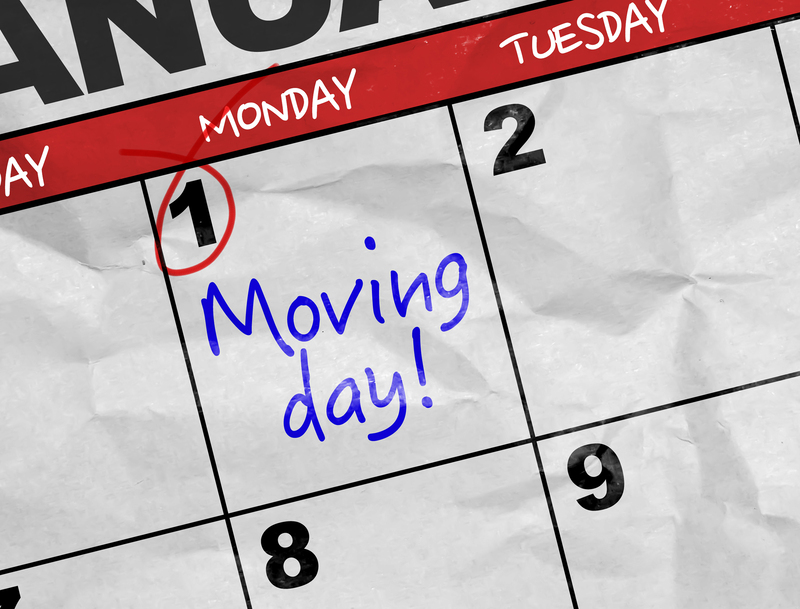Office Moving Checklist
Posted on 08/05/2025
Moving your office can be a daunting task filled with potential pitfalls and stress. However, with a detailed office moving checklist, you can make the transition smoother and more organized. This comprehensive guide will cover everything you need to know to prepare for, execute, and finalize your office move.
Pre-Move Planning
Successful office relocation begins with meticulous planning. Start preparing at least three months in advance.
- Announce the move to your employees and stakeholders.
- Assign a move coordinator who will oversee the process.
- Create a budget and timeline for the move.
- Communicate with your current and future landlords about lease terms.
- Inform clients and vendors of the upcoming move.

Inventory Management
Conducting a thorough inventory of your office equipment is crucial. Decide what will be moved, what will be sold, and what will be recycled.
- Make a detailed list of all office furniture, equipment, and supplies.
- Identify items that require special attention (fragile, valuable, etc.).
- Label all items and prepare a coding system for easy identification.
Choosing a Moving Company
Hiring a professional moving company can alleviate much of the stress involved in relocating your office.
- Research and request quotes from multiple moving companies.
- Check reviews and testimonials to ensure reliability.
- Clarify all aspects of the moving contract, including insurance policies.
Packing
Efficient packing is key to a smooth move. Start packing non-essential items well in advance.
- Use high-quality packing materials.
- Clearly label all boxes with their contents and destination rooms.
- Take extra precautions with sensitive equipment (e.g., electronics).
- Keep an inventory of all packed items.
IT and Telecommunications
Avoid disruption to your business by planning the transfer of your IT and telecommunications systems meticulously.
- Create a backup of all data.
- Coordinate with IT professionals to manage the disconnection and reconnection of systems.
- Update your new address with all online listings, stationery, and mail forwarding services.
Final Preparations
In the final weeks leading up to the move, tie up any loose ends to ensure a seamless transition.
- Conduct a final walkthrough of the new office space.
- Ensure all utilities (internet, phone, electricity) are set up.
- Arrange for keys, security codes, and access passes for all employees.
Moving Day
On moving day, coordination and communication are vital.
- Have the move coordinator oversee the process to ensure everything runs smoothly.
- Double-check that all items are loaded and unloaded correctly.
- Direct movers once you arrive at the new location.
Post-Move Settling In
The work doesn't stop once the move is complete. Settling into your new space is equally important.
- Unpack methodically, starting with essential items.
- Set up workstations and communal areas first.
- Schedule a welcome meeting for employees to familiarize them with the new layout and facilities.
Pros and Cons of Office Moving
Pros
- Opportunity to upgrade to more efficient office space.
- Potential for increased employee morale and productivity.
- Possibility of improved company image.
Cons
- Disruption to daily business operations.
- High cost, both direct and indirect.
- Potential for misplaced or damaged items.
Tips for a Smooth Office Move
- Start early and have a detailed plan.
- Communicate with employees to keep them informed and involved.
- Use color-coded labels to simplify the unpacking process.
- Keep an emergency kit with essential items (tools, first-aid, etc.).

Key Takeaways
- Plan well in advance and communicate clearly with all parties involved.
- Hire reliable professionals to assist with the move.
- Stay organized and maintain a checklist to ensure nothing is forgotten.
- Prepare for both planned and unplanned disruptions.
Conclusion
Moving an office is a complex process that requires careful planning and execution. By following this comprehensive checklist, you can ensure a smooth and efficient transition to your new workspace. Remember, the key to success lies in detailed planning, clear communication, and flexibility. With these elements in place, your office move can be a positive experience that sets the stage for future growth and success.

